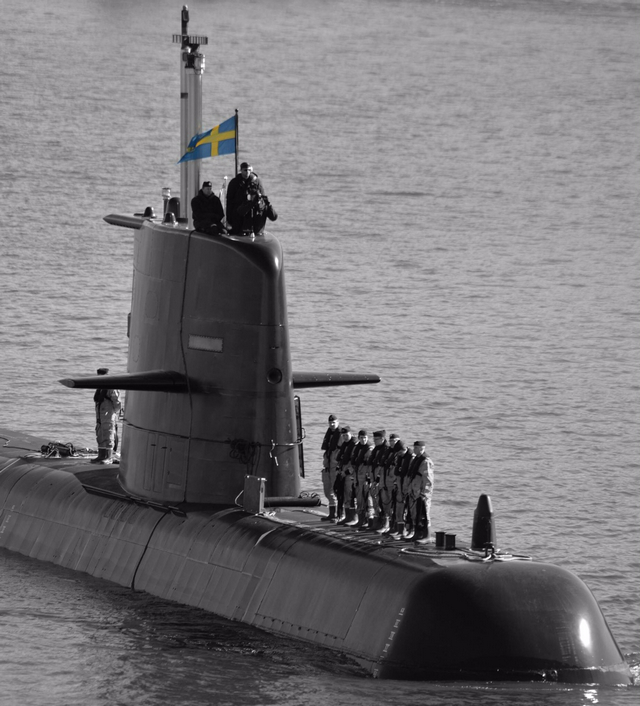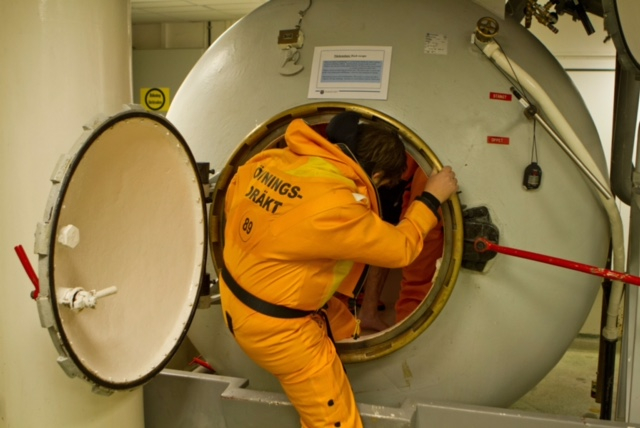|
|
|||
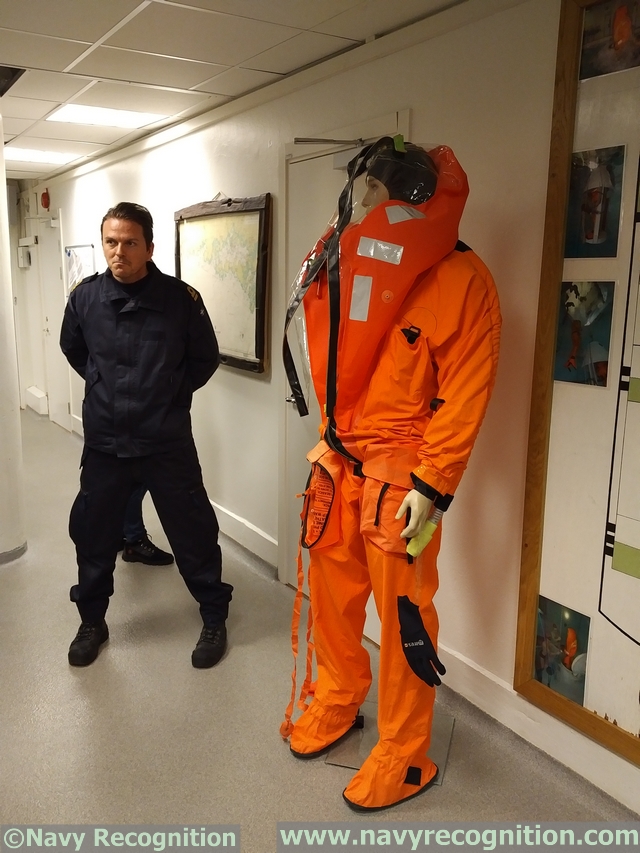 The commanding officer of HMS Gotland standing next to the suit used for submarine escape. The commanding officer of HMS Gotland standing next to the suit used for submarine escape. |
|||
|
|
|||
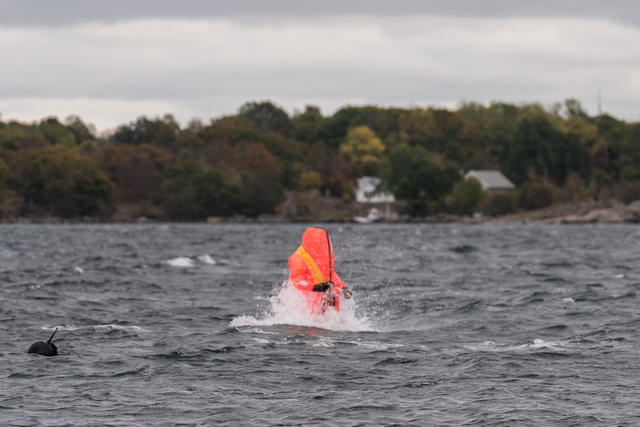 Submarine escape training at sea. Picture by Andreas Sannerman Swedish Armed Forces. Submarine escape training at sea. Picture by Andreas Sannerman Swedish Armed Forces. |
|||
|
|
|||
|
Swedish Navy submarine crews are training in submarine escape once a year (on average) using an 18 meters deep tank located on the base.
During training (as well as for a real escape), crew members wear a special suit. Once in the escape lock, a water tight plastic hood covering the head is filled with air. The top of the lock is then opened and crew-members have to reach the water surface as fast as possible. There are two types of locks located right below the tank: A "rush escape" lock and a much smaller "single lock". |
|||
|
|
|||
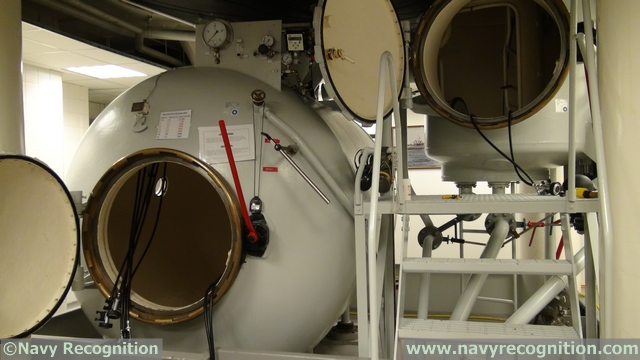 The rush escape (left) and single lock (right) are located right below the 18 meters tank. The rush escape (left) and single lock (right) are located right below the 18 meters tank. |
|||
|
|
|||
|
|
|||
|
|
|||
|
The rush escape locks were fitted on Näcken-class submarine until 1997. A Large part of the crew was able to escape at the same time. Nowadays, this lock is used as part of the training for free ascent and escape. A maximum of seven trainees and two diving instructors can fit in this lock.
The single lock was originally designed for Västergötland-class submarines in 1986. The same kind of lock are used today aboard Södermanland and Gotland class submarines. The principle is one ascent / escape per crew member from the submarine. At the training facility, the ascent / escape is conducted by one diving instructor and one trainee. Free ascent / escape from the single lock has been performed from a depth of 590 feet deep (about 180 meters. |
|||
|
|
|||
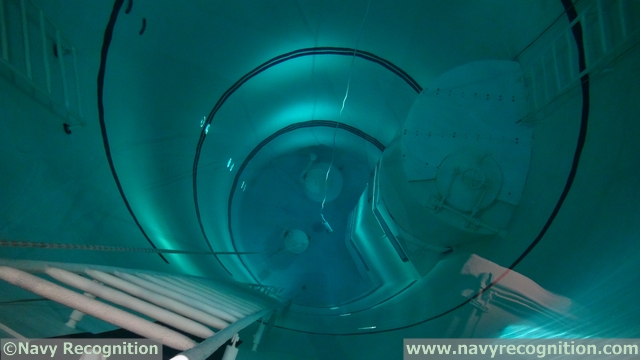 Top view of the 18 meters tank. Top view of the 18 meters tank. |
|||
|
|
|||
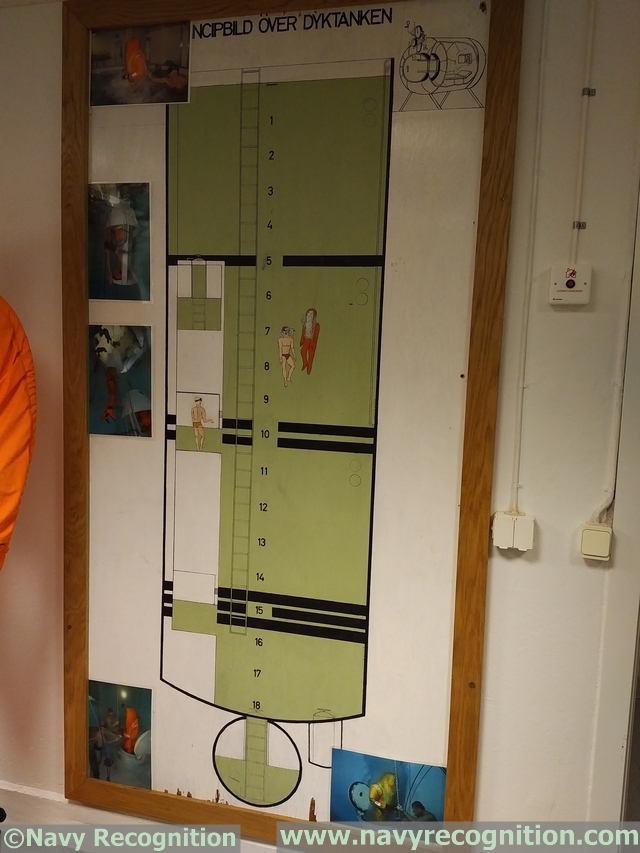 Schematic of the 18 meters tank. Schematic of the 18 meters tank. |
|||
|
|
|||
|
We asked the commanding officer if submarine escape is ever conducted "live from the submarine while at sea". He explained that he personally escaped his submarine during training, from a depth of 60 meters.
The Swedish Navy training facility has also been used by submarine crews of foreign navies such as Singapore, Germany, Greece, South Africa and even the USA. |
|||
|
|
|||
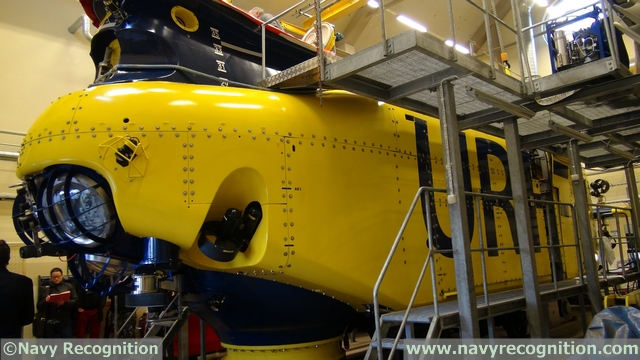 The URF in a hangar at Karlskrona naval base. The URF in a hangar at Karlskrona naval base. |
|||
|
|
|||
|
During our visit, we were also shown the URF (Ubåts Räddnings Farkost – Submarine Rescue Vessel). It was manufactured in 1978 by Kockums (now Saab) in Malmö with the assistance of COMEX (or Compagnie Maritime d'Expertises), a French company specializing in engineering and deep diving operations. It was then modernized in the mid-1990ies with JFD of the UK.
|
|||
|
|
|||
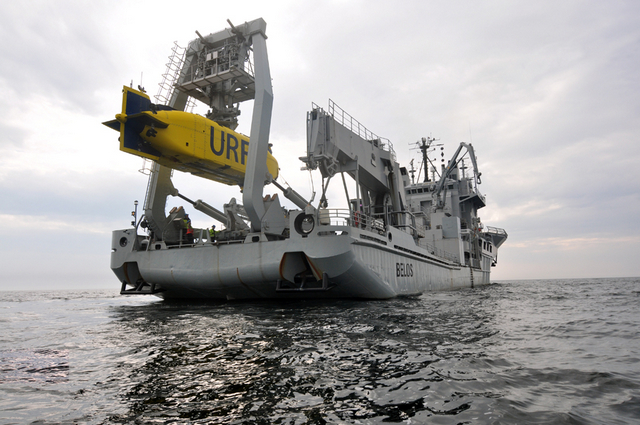 The URF aboard HMS Belos. Picture by Andreas Sannerman Swedish Armed Forces. The URF aboard HMS Belos. Picture by Andreas Sannerman Swedish Armed Forces. |
|||
|
|
|||
|
The URF is a "mini sub" designed specially for rescue of submarine crews down to 460 meters. It also has a lockout system for bounce or saturation diving to 300 meters. In January 1984, URF broke an unofficial deep diving record for conventional submarine with a dive to 342 meters.
In a situation where the submarine is damaged so that a watertight seal can not be obtained between the submarine and the URF, the crew can make a "free ascent" to the URF which has been pressurized to the equal depth and is placed a few meters above the hatch of the submarine. |
|||
|
|
|||
 Picture by Andreas Sannerman Swedish Armed Forces. Picture by Andreas Sannerman Swedish Armed Forces. |
|||
|
|
|||
|
After this type of rescue operation and when diving, the personnel mst go through a decompression procedure, for which reason there is a special "transfer capsule" in the system to transfer personnel under pressure to a bigger decompression chamber on board HMS Belos or a Karlskrona naval base.
|
|||
|
|
|||
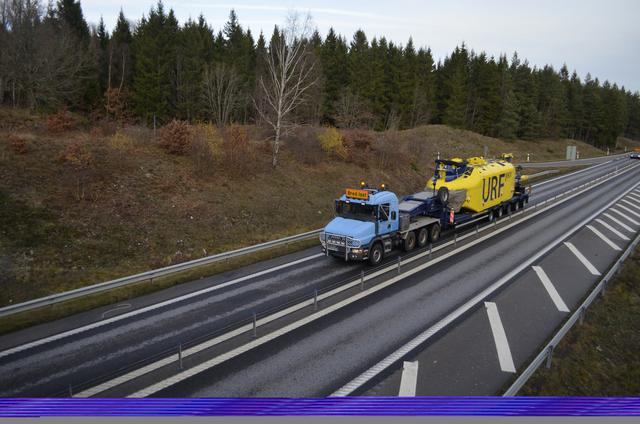 URF can be transported around Sweden or Europe on a truck. Jorgen Larsson Swedish Armed Forces. URF can be transported around Sweden or Europe on a truck. Jorgen Larsson Swedish Armed Forces. |
|||
|
|
|||
|
With its 13.9 meters long and 54 tonnes displacement, URF can be truck or air-lifted on vert short notice (48h) to most parts of the world.
|
|||
|
|
|||
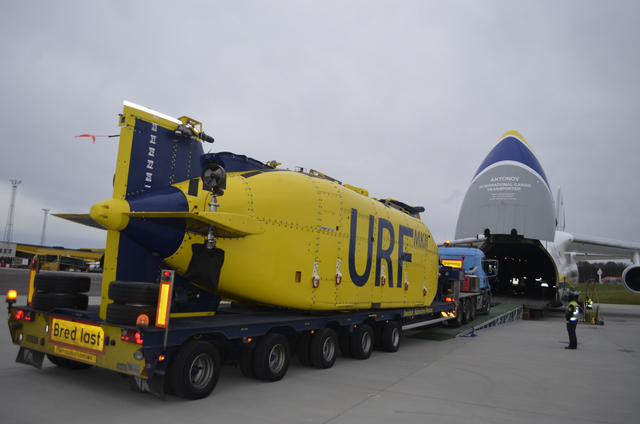 URF can also be airlifted. Rebecka Signaes Swedish Armed Forces. URF can also be airlifted. Rebecka Signaes Swedish Armed Forces. |
|||
Submarine Escape Training Facility & Submarine Rescue Vehicle of the Swedish Navy
- Posted On





